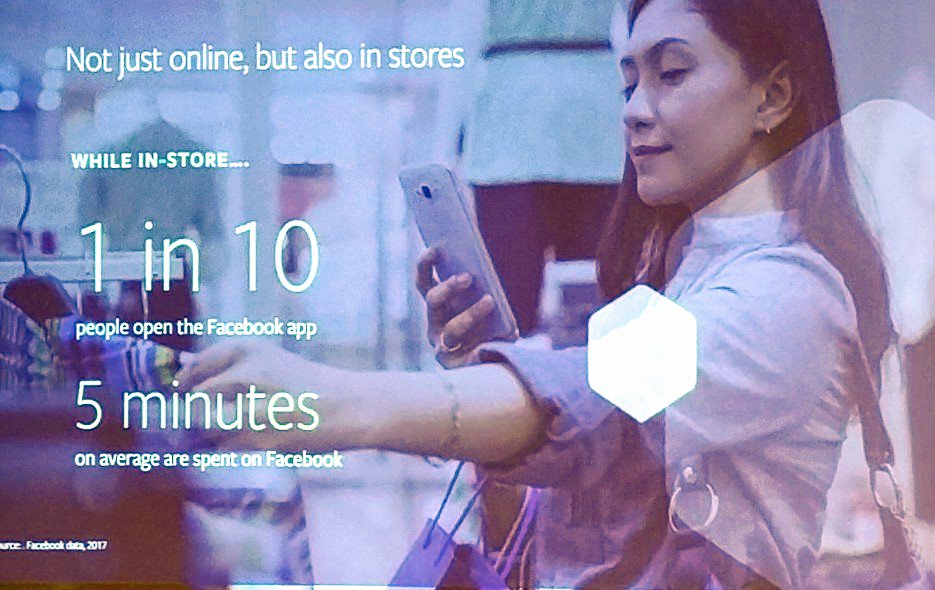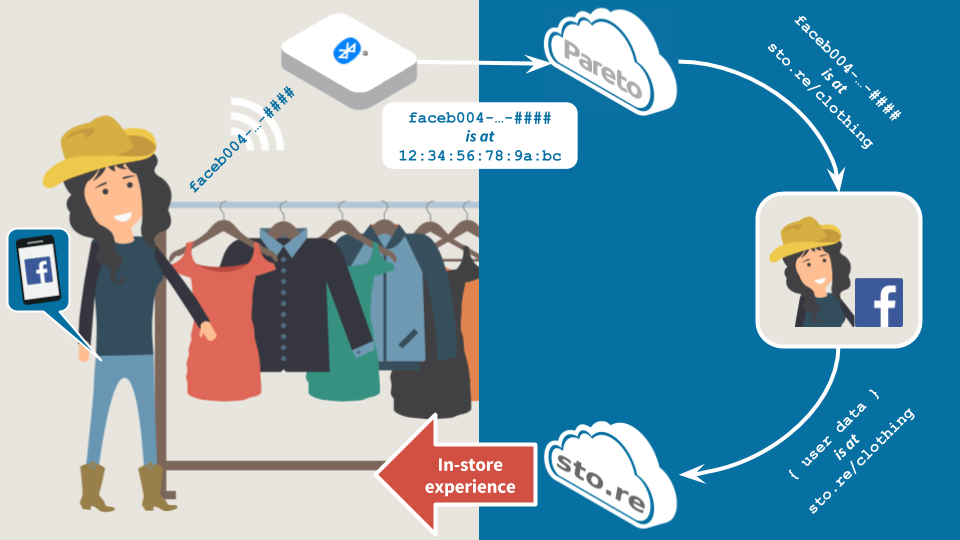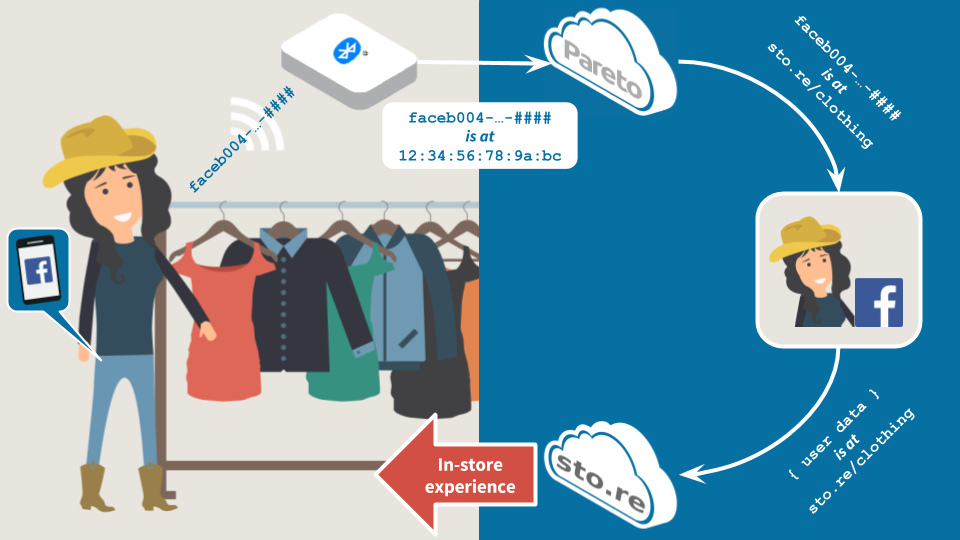At the 2017 Place Conference, on the Rx for Retail panel, Trace Johnson of Total Wine & More eloquently summarised his problem, one faced by so many modern retailers today:
“we need a unified view of our customer”
And while the panel concluded that there is no single vendor that can offer that solution, conference organiser Greg Sterling interjected:
“Facebook is the closest”
Indeed, Facebook, who also presented at the conference, have an unprecedented understanding of their 2 billion monthly active users, and already offer to their business customers arguably the best targeted advertising capability of any platform. And if the audience (or even Facebook themselves!) had any doubt about their presence in brick-and-mortar retail, these fresh stats hammered home the point:

So what’s preventing Facebook from offering retailers a unified view of the customers that walk through their door — as they walk through the door? Not much we’d argue! In addition to having an established relationship with most retailers, they have both the digital view of the customer online and the physical presence of their mobile app in-store. From a technological perspective it’s entirely feasiBLE to connect the two!
The above diagram illustrates how we see Facebook closing the loop. The missing link is essentially the Facebook app “advertising” a real-world cookie using Bluetooth Low Energy (BLE), and the infrastructure to relay back to Facebook the precise real-time location of this cookie, whenever it is detected. With this in place, Facebook could push the retailer not only a unified view of their customer, but one contextually enriched with the on-line and in-store journey. As a result:
Facebook owns the user. The retailer owns the in-store experience.
It’s important to note that Facebook did try to roll out a beacon infrastructure in 2015 which, unsurprisingly, didn’t work out (another presenter at the conference, TouchTunes, lamented the impossible logistics of maintaining their fleet of tens of thousands of battery-powered beacons). The differences in the scenario we present are the following:
- Internet-connected mains-powered BLE infrastructure solves this logistics nightmare
- Facebook doesn’t need to own/manage this infrastructure
At reelyActive, we’ve been selling such infrastructure to small and large businesses for years, and we’re not alone. But the game-changer will be when BLE capabilities are added to smart lighting infrastructure — which is actually happening even faster than we expected! In short:
infrastructure can no longer be considered a blocker
Facebook can enable — with clear user opt-in, of course — their mobile app to advertise a user identifier in the form of a 128-bit UUID (which is supported by both iOS and Android).

Any infrastructure in range would detect these BLE packets, and software such as our Pareto SaaS could establish their provenance from the Facebook app from the Public ID. The software can then forward the UUID to Facebook’s API along with the precise location of the receiving infrastructure. Using the Private ID, only Facebook can then look up their user and push any relevant info to the retailer’s back-end, for them to deliver the final in-store experience.
That in-store experience is what brick-and-mortar retail is all about, and we were (again) reminded that 9 out of 10 purchases are still made in-store. But without a unified customer view, how can we expect our local retailers to optimise the experiences accompanying 90% of the purchases we make? Especially when, as Verve’s Walt Geer highlighted, an increasing number of consumers themselves already expect this and won’t hesitate to opt-in for the promise of personalised experiences!

Four years ago, when our vision of the future helped us win World’s Best Startup, we wrote Facebook, you might “like” this. Today as that vision is becoming a reality, we might instead say Facebook, it’s time to “share” your view of the customer. How could that not be good for business?


Comments
2 responses to “Facebook, it’s time to “share” your view of the customer”
[…] come as no surprise that now with over two billion monthly-active “products” in stock, Facebook has established itself as the marketplace for hyper-targeted advertising. Indeed, the titans of social media and e-commerce each painstakingly maintain their own digital […]
LikeLike
[…] unveiled the uncomfortable truth behind advertising business models. In short, don’t expect our suggestion to Facebook following last year’s Place Conference to become a priority anytime […]
LikeLike